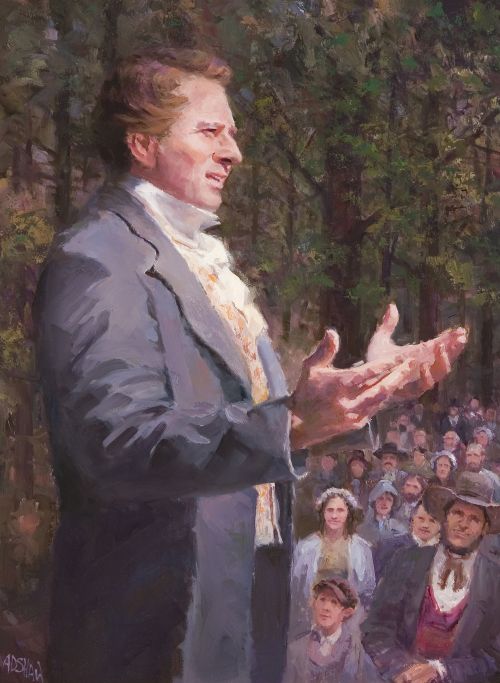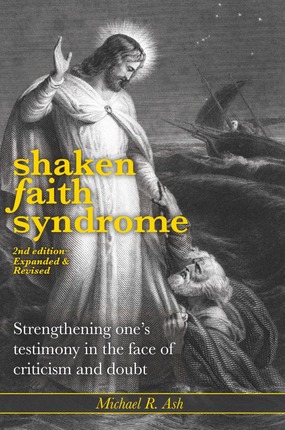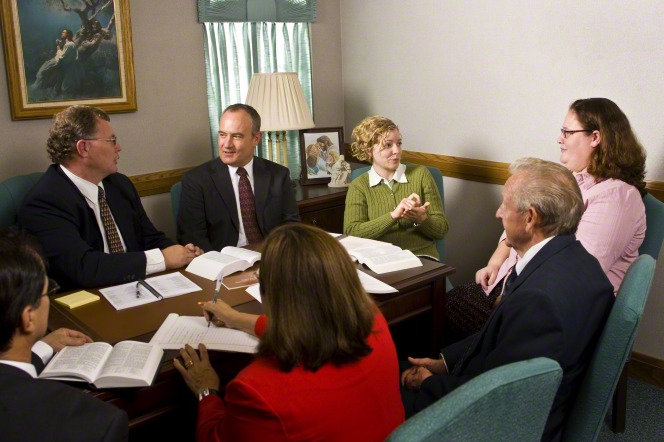“Ye Were Also In The Beginning With The Father”
By Kara Dawson

D&C 93 teaches in two separate verses that “ye were also in the beginning with the Father” (v.23) and “man was also in the beginning with God. Intelligence, or the light of truth, was not created or made, neither indeed can be” (v.29). Joseph Smith’s teachings during his lifetime demonstrated clearly that spirits were coeternal with God. In an 1839 sermon he taught as recorded by William Clayton, “The Spirit of Man is not a created being…It existed from Eternity and will exist to eternity. Anything created cannot be eternal.” (1) In the King Follett sermon given in 1844, he noted, “God never did have the power to create the spirit of man at all.” (2) “I must come to the resurrection of the dead, the soul, the mind of man, the immortal spirit. All men say God created it in the beginning. The very idea lessens man in my estimation; I do not believe the doctrine, I know better. Hear it all ye ends of the world, for God has told me so.” (3)
Yet how do we reconcile these verses with modern-day accepted Church teachings that, “All men and women are literally the sons and daughters of God” (4), and that, “those who abide in the covenant and are exalted in the highest degree of the celestial kingdom will have spirit children in the eternities”(5). Whether spirits existed eternally or were born in some process beyond our comprehension is one of the areas in which we are waiting for further light and knowledge, and this is clearly not a topic that we need to understand for our salvation. Church members have a variety of opinions on the subject, informed by both canonized scripture, teachings of Church leaders and folk doctrine, and consensus cannot be reached given the current lack of clarity; yet, it’s an interesting subject to study and ponder. The purpose of this short article is not to lay out the arguments for each, but to summarise the main ideas in terms of questions and the sources of scholarship available for further study on the evolution of LDS thought on the subject.
The two basic possibilities are: [Read more…] about Come, Follow Me Week 35 – Doctrine and Covenants 93





 Mark Ashurst-McGee is a senior historian in the Church History Department and the senior research and review editor for the Joseph Smith Papers, where he also serves as a specialist in document analysis and documentary editing methodology. He holds a PhD in history from Arizona State University and has trained at the Institute for the Editing of Historical Documents. He has coedited several volumes of The Joseph Smith Papers and is also coeditor of Foundational Texts of Mormonism: Examining Major Early Sources (Oxford University Press, 2018). He is also the author of several articles on Joseph Smith and early Latter-day Saint history published in scholarly journals and popular venues.
Mark Ashurst-McGee is a senior historian in the Church History Department and the senior research and review editor for the Joseph Smith Papers, where he also serves as a specialist in document analysis and documentary editing methodology. He holds a PhD in history from Arizona State University and has trained at the Institute for the Editing of Historical Documents. He has coedited several volumes of The Joseph Smith Papers and is also coeditor of Foundational Texts of Mormonism: Examining Major Early Sources (Oxford University Press, 2018). He is also the author of several articles on Joseph Smith and early Latter-day Saint history published in scholarly journals and popular venues. Bruce Hafen grew up in St. George, Utah. After serving a mission to Germany, he met Marie Kartchner from Bountiful, Utah at BYU. They were married in 1964.
Bruce Hafen grew up in St. George, Utah. After serving a mission to Germany, he met Marie Kartchner from Bountiful, Utah at BYU. They were married in 1964.